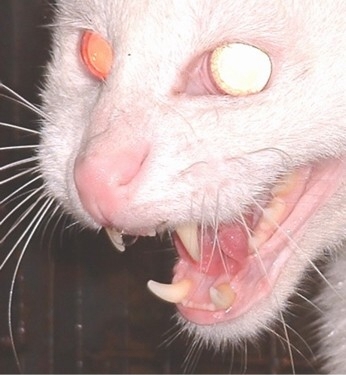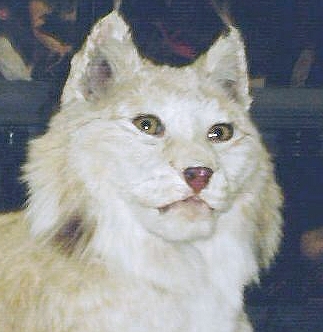Adam writes...
So anyhow Jim, I'll put it this way: I was in San Francisco last weekend and I drove by SBC Park, one of the more recognizable stadiums in MLB today. It made me think of all the great parks in baseball, new and old: Fenway, the Polo Grounds, the Madison Mallards Duck Pond, Joe Robbie Stadium, you know -- all the great ones.
So shoot me straight here: What do you think are the greatest stadiums of all time, and what makes a great stadium great? Big? Old? Unique? Maybe it's something intangible that you can't even describe. Still, I feel like you've got enough steam up there to blow me some sort of answer.
Bseaball stadiums are like other material goods, they are very trendy. If you look on the internet to get a rating of best stadiums, you get a list that includes all the newest and all the oldest. Fenway park is always on the list of best stadiums. I've been there, I love it. Its small, intimate setting was so different than the experience that I'm used to at expansive Busch stadium that you would best have to describe it as quaint. On the other hand, getting there is a pain, parking there is expensive, and have you ever heard of "obstructed view" seats? Believe me, if you ever get one of those seats, it is a challenge to watch the game. Then there are stadiums such as Philadelphia's cookie cutter Veteran's Stadium. No one has anything but bad things to say about that place, but I've never been there so I don't know why. I'll tell you what, let's look at the history of stadiums, what created the trends and how those stadiums affected the game. After all, forget what other people tell you, the best stadiums are the ones you enjoy the most.

When baseball first got started, they had no stadiums. They played in parks with no fences to create home runs. The ball itself was also softer so it didn't travel as far. The way to win baseball games in the late 1800s was, in the words of Wee Willie Keeler, to "hit'em where they ain't". Keeler played for the National League Baltimore Orioles, a team noted for rough and tumble, down and dirty ball. They would eke out runs one at a time, by any method possible. They were famous for hit and run plays, suicide squeeze plays, bunts, sacrifices, and their famous "Baltimore chop", a play where the batter would swing down on the ball to make it bounce so high that the runner would be on first before the ball could be fielded. Their all-star third baseman, John McGraw was adept at hitting foul balls and this was when fouls were not counted as strikes. So adept at it was he that many give him credit (or blame) for the institution of the rule counting fouls as the first two strikes. This was a game of a lot of action and a lot of strategy.
By the early 1900s, Baseball became a stable viable source of entertainment. Teams started building stadiums (actually "ballparks") that would last for a long time and more importantly not burn down. Two of those stadiums were Chicago's Wrigley field and Boston's Fenway park. Those stadiums were small by today's standard, holding 30-35,000 fans. Many times, dimensions were dictated by available space. Fenway's famous Green Monster was a product of two space limitations. First the left field fence was very short because of lack of space of the property the park was built on. Because of the short fence, home runs would sail out of the park through the windows of the shops across the street. To appease the shop owners, they built the tall wall that has become an icon to the quirky dimensions of the stadiums of that era.
Several things happened in the late teens. Parks with small dimensions were built, the ball was wound tighter, and Babe Ruth came along. The Babe, hit home runs at a pace that eclipsed anything anyone had ever seen. What many fail to realize is the first time Babe Ruth broke the home run record, he bested the record by two for a total of 29. Only later did he go on to break it again with 54 and finally with 59. He more than doubled the record over the course of 3 years! Everyone started swinging for the fences and hitting home runs. All that strategy of the 19th century went by the wayside. The way to win games was to get a slugger to hit home runs. Why take the chance of getting caught stealing a base, when your chances were better that someone would drive you in with a homer, scoring two runs?
Then there was the Polo Grounds that the Giants played in for years. The team had played in 4 previous versions of the Polo grounds, the original actually being Polo Grounds. As each incarnation of the stadium was built, the odd dimensions were kept. With dimensions as short as 256 1/4' down the first base line and as long as 505' at straight dead away center field, there must have been some very strange baseball played there. As a matter of fact, after seeing these dimensions, it brings into perspective just how amazing Willy May's catch was during the 1954 World Series was. But I digress. The point is, I have found no reason to keep these awkward dimensions, but they did. Was the Polo Grounds a great ballpark, or a freak? I know Bobby Thompson fell in love with it when he hit "the shot heard 'round the world" to win the pennant for the Giants in 1951.
Along came the 60's and someone came up with the idea of multipurpose stadiums. Busch Stadium was the first and even though it wasn't the last to be built, it was the last to stand. The idea was to have a building that could house not only baseball but football, soccer, circuses, rock concerts and many other outdoor venues. From an economic standpoint it made a world of sense. When Houston built their new domed stadium, they realized that grass would not grow inside. Monsanto came to the rescue with artificial plastic grass. It took its common name from the stadium that created the need for it in the first place... Astroturf.
For some reason, the National League hopped on the multipurpose bandwagon. The much maligned "cookie cutter" stadiums popped up in Pittsburgh, Philadelphia, Atlanta, Cincinnati, Montreal, and the list goes on. The huge expanses of outfield and the smooth fast surface of Astroturf made hitting home runs difficult. The bad hops that plagued grass stadiums were fewer by far, but the ball traveled so fast that it was hard to catch up to. This spawned a return to the strategies of the previous century. The National League found that using pitchers that would make the batters hit ground ball more valuable than ones that threw strike outs. The scrappy, eke out one run at a time philosophy came back to the forefront. The National League game became intrinsically different than the American League game. In the National League the stolen base was common. In the American League, the home run still dominated the game.
One thing that was lost in the newer, bigger stadiums was the intimate atmosphere of the smaller ballparks. A fan in the front row of Busch stadium was no closer to home plate than a fan in the 20th row of Fenway Park.
When Baltimore rebuilt Camden yards, they realized that one of the appeals to baseball was its past and its heritage. When they had the architectural firm HOK design their new Camden Yards, they took all those retro looks and lines, put them together with modern construction techniques and had the best of both worlds. Intimacy of the old, luxury of the new. The baseball world was so smitten with the new Camden Yards that everyone had to have one.
The cookie cutters were torn down, astro turf was torn out, fences were moved in, stadiums were transformed into parks again, and as far as I know, they were all designed by the same firm, HOK.
How did this affect baseball? Home runs, here we come again.
Surely, there were a few dogs in stadium history. Probably the worst was Olympic Stadium in Montreal. It was going to be the first stadium with a retractable roof, but when they were done, there was no roof. It sat that way for ten years until the roof was finally completed, but it took another two years before it would retract. That only lasted a few years. Then a 55 ton concrete beam fell, closing the stadium for a while. The retractable roof that didn't retract wore out and had to be replaced with a roof that didn't retract on purpose.
Many of the stadiums that people complained about were just never maintained properly.
So which are the truly great stadiums and which are the dogs? I don't know. I do know, for as much as I enjoyed watching Mark McGwyre hit 70 home runs, I miss Whitey ball. I think quirks were wonderful when they were dictated by surroundings, but look at Houston's "Whatever Brand Name" dome. Those Crawford boxes are the stuff cheap home runs are made of. The "Crosley Field" hill and "Yankee Stadium" flagpole in center field are injuries waiting to happen. I have a real problem with quirks that are totally contrived.
If the cookie cutters were so bad, why did people cry at the last game they attended at Busch. How does it make any sense to tear down the last remaining stadium that represented a whole era in baseball to build a new stadium that has the feel of stadiums that were built a hundred years ago? Isn't one of the joys of baseball the fact that each stadium is a little different? One of the biggest complaints about the cookie cutters was they all looked the same. Then why is baseball so intent on building a whole new set of stadiums that look the same? I think Busch would have been the Fenway Park or Wrigley Field of the 60's. A stadium that represented a time when baseball was different, and in many ways better. So why?!... Oh, yeah... Duh!... MONEY!

 sick, but the toxins it produces.
sick, but the toxins it produces.
















